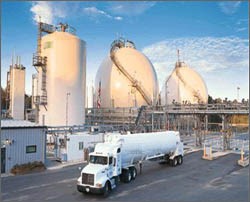-
Mitsubishi Hitachi and Magnum Development working on gas-based energy storage in Utah salt cavern
Date posted:
-
-
-
Post Author
Patrick LaveryCombustion Industry News Editor
-

-
A joint initiative between Mitsubishi Hitachi Power Systems and Magnum Development has launched an innovative project to store hydrogen or compressed air in a salt cavern in Utah as a means of storing energy produced from renewable energies. With an aim of achieving storage at a price competitive with or cheaper than battery storage, the gaseous storage would have as competitive advantages the ability to store energy effectively indefinitely, and to eventually store a great deal of energy. Initially, the design output of the storage will be 250 MW when it is scheduled to launch in 2025, but that will rise to 1000 MW later, and the total storage capacity is described as “unlimited”, as the size of the cavern is roughly 1.6 km deep and 4.8 km wide. (Assumedly, however, the storage volume would have to be artificially limited, to allow compressed air to be stored if it was chosen as the medium, or to avoid dilution of hydrogen.) Power generation for release from the storage facility would either come about from burning hydrogen in a gas turbine or by using the compressed air to turn a turbine. The location of the storage has been chosen to tap into the high degrees of renewables installed on the west coast of the US, for example California, and the facility would make money by releasing energy in times of high demand. Preparing the cavern for storage will be the first task of the project, estimated to take two years, during which a choice will be made about the storage medium. The project, Advanced Clean Energy Storage, is a good example of how renewables and combustion may coexist in the future to deliver a low-carbon energy sector.
